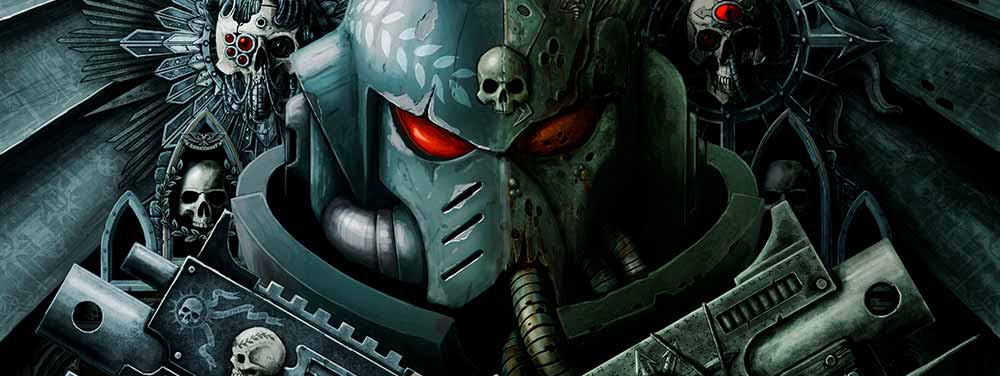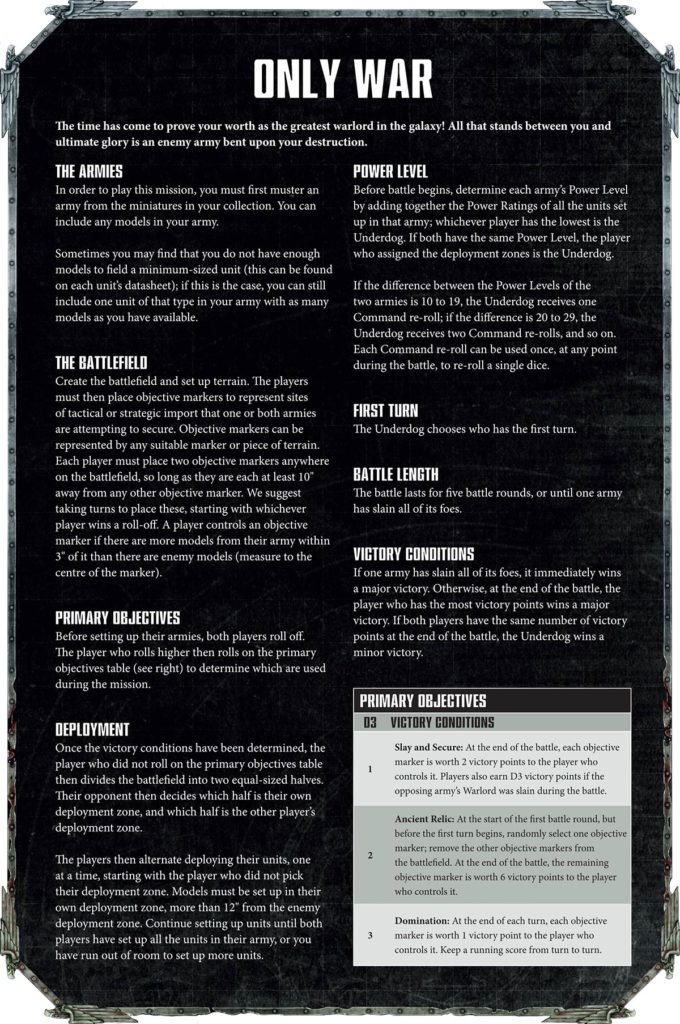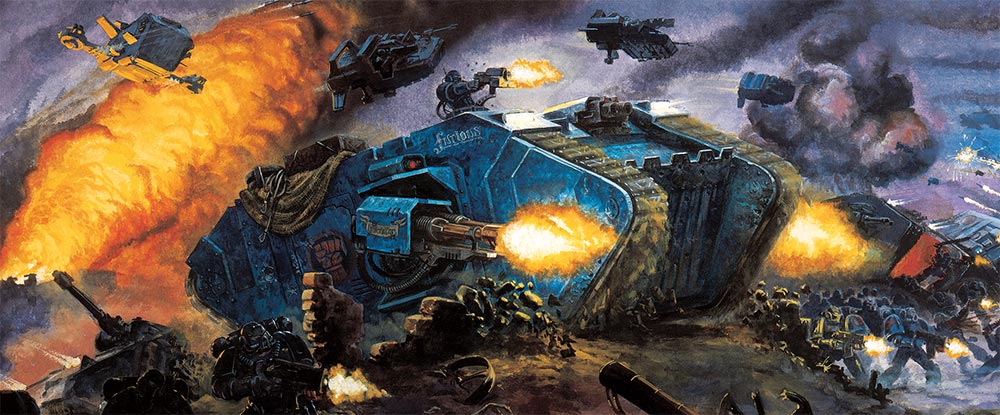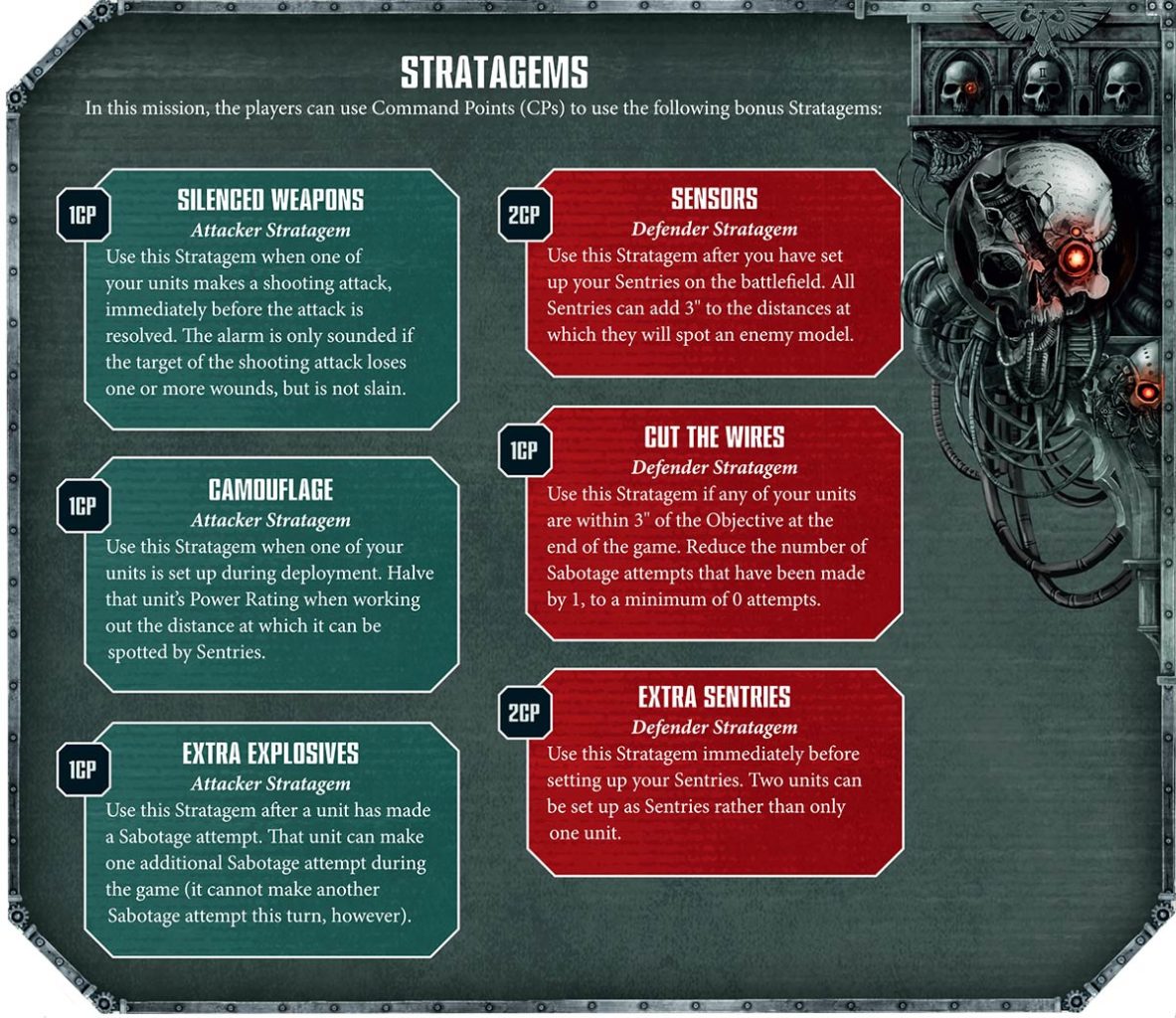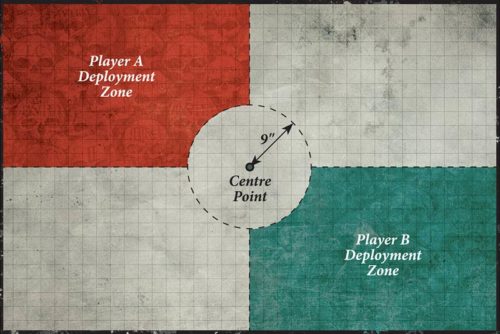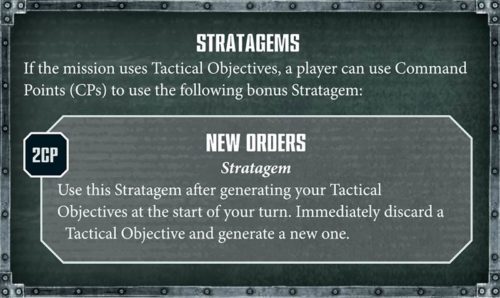40K: 8th Edition Missions Preview


In the grim darkness of the far future there is “Only War” and now Games Workshop is showcasing what that mission!
Ask any veteran of grimdark and they will tell you, if you want to actually win games, you better keep the 40K missions in mind and not just focus on killing your enemy. Many games have come down to that last objective point secured – it’s the difference between victory and defeat. Well in 8th Edition, Games Workshop has lots of missions for us to try out but today they want to take a look at the most basic mission of them all: Only War.
via Warhammer Community
This mission is pretty simple and it looks like it’s designed for just about any game type – Matched, Narrative or Open Play. From the looks of it, when you’re doing your army construction, I wouldn’t just keep track of your points but also your armies Power Level. That should save time when it comes to setup and determining the Underdog/Command Re-rolls.
For old hands at this game most of the stuff on the mission sheet should feel pretty familiar. The mission is a little loose on the army construction (but you can always agree to a Point/Power Level value to play). The Battlefield setup is mostly the same. You still place terrain and objectives. I like that they created a random D3 table for the Primary Objectives for this one too. You never know exactly which mission you’re playing so you’ll want to be flexible enough for all 3.
Deployment is still straight forward – you pick table halves. But you could also play long-ways, short-ways or even diagonal (as long as both halves of the table are, you know, equal area…which is how cutting things in half generally works). It also doesn’t specify board size in the mission. If you’re playing a smaller game you could play on a 2×2 or 4×4. If you want a larger game go for a 6×4 or 8×4 – use your best judgement. Deployment is also an I-Go-You-Go format.
Power Level determines the Underdog and how relatively balanced the armies are to each other. Again, you also set Power Levels and points before you play (which I would recommend). If there is a difference, the Underdog player gets some extra command re-rolls which is nice. They (the Underdog) also gets to choose who has the first turn.
Game length is 5 battle rounds – or until one side is DEAD!
The Victory conditions are slightly tweaked, too. If you completely wipe out your opponent – you win a major. If you get more Victory Points, you win a major. If you tie, then the Underdog gets a minor victory. That’s an interesting curve-ball in my book. I’m keeping notes on that one.
Now, if this mission seems a little “basic” for your tastes, fear not! There are many more options on the way for all 3 types of games:
There are three open play missions that give a bit more variety to your games: Annihilation, Hold at All Costs and Death or Glory – each an archetypal mission fit for any collection.
Narrative play brings more options still, and the rules for these missions are a bit more in-depth. There are six of these in the book: Meat Grinder, Ambush, Patrol, Blitz, Sabotage and Rescue. Each comes with not just new mission rules, but three new Stratagems for the Attacker and three for the Defender, making these games quite distinct from a traditional game. Here are a few examples from the Sabotage mission:
And of course, we have matched play. A lot of these missions will be familiar to players today. You still have your six Eternal War and six Maelstrom of War missions, but with a few tweaks since their last outing. One big change is we now have six deployment maps, rather than the three of today. Players of a certain vintage might recognise some of these from even older editions.
Subscribe to our newsletter!Get Tabletop, RPG & Pop Culture news delivered directly to your inbox.By subscribing you agree to our Terms of Use and Privacy Policy.
Read the Full Article HERE
Besides the changes to the missions and maps, GW has also decided to keep Malestrom of War around. Malestrom missions were always a bit …uh, “divisive” among the community. Most of the tournaments simply ignored them out right in favor of set missions or objectives. It was frankly easier to keep the scores more in line that way. On the other hand, Narrative folks didn’t seem to mind them all that much. They did add that random battlefield chance to the scenario and sometimes if could feel very cinematic.
No matter how you felt about the Malestrom missions, pretty everyone agreed on one thing: It needed a way to re-draw cards from the deck. Nothing was worse in a game when you drew a handful of tactical objectives you simply couldn’t do anything with. That would really take the “fun” out of the turn for me personally as I would have to watch my opponent rack-up the VPs while I couldn’t score. The good news is that is sounds like GW listened:
Hey – look at that! A re-draw mechanic. ‘Bout Time! On one hand I’m glad to see that this is in the game. On the other, I’m looking at the CP cost of 2 and wondering if that’s a little steep. Then again, GW has said that they have re-done the deck from the ground-up. So many it will be totally worth it to scrap a card to get a new one for 2 CP. We don’t have enough data to know for sure yet!
Overall, Missions have always been a key part of the 40k game. I’m glad to see that GW is taking a look at all aspects of the missions and supporting all 3 modes of play. That’s a good thing in my book and I can’t wait to give them a try!
What do you think of these new missions? How about the return of some old school deployment zones?! Let us know in the comments below!

